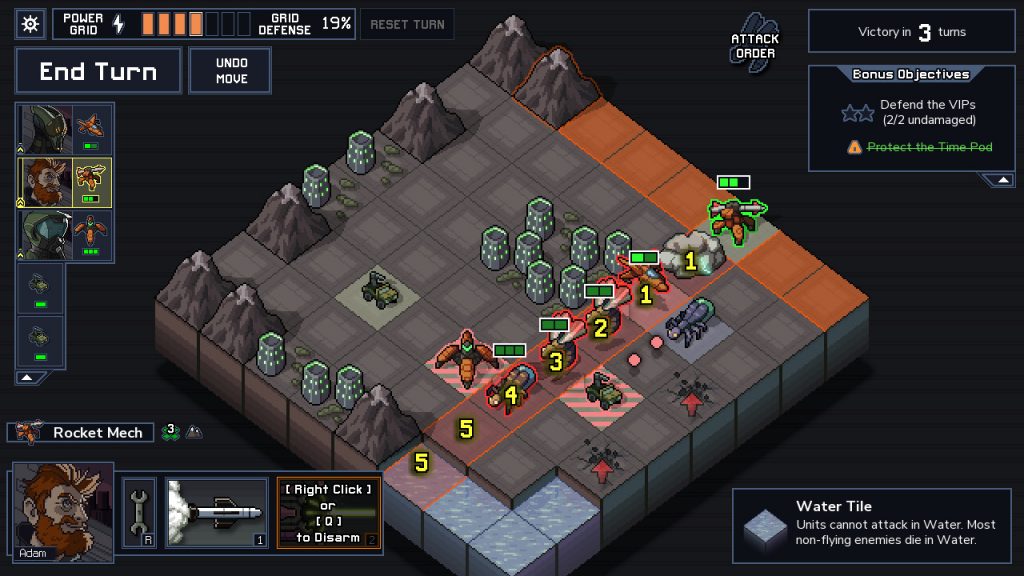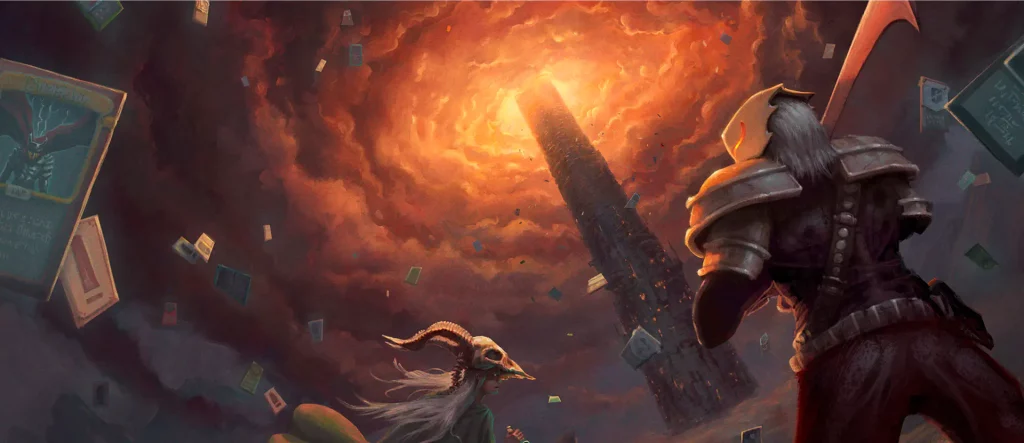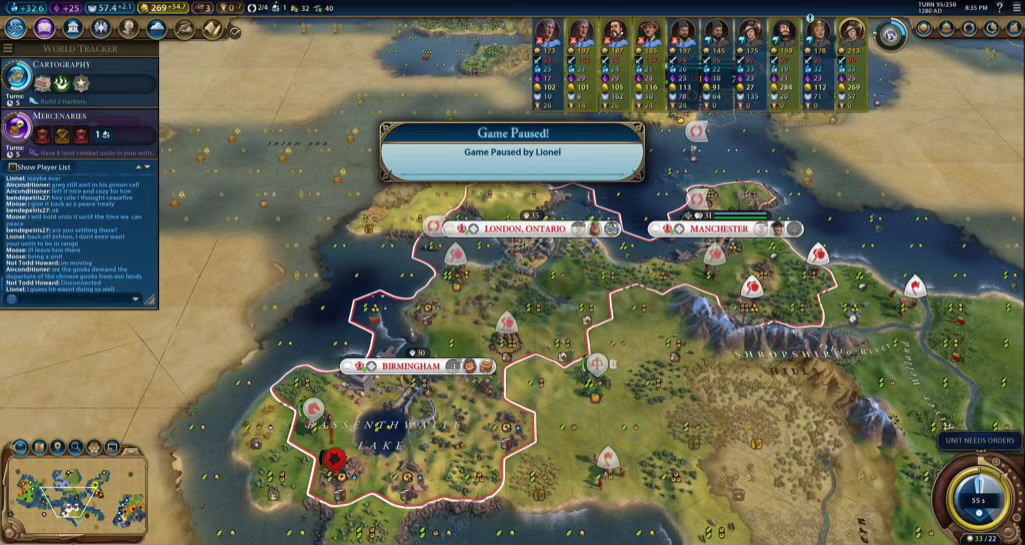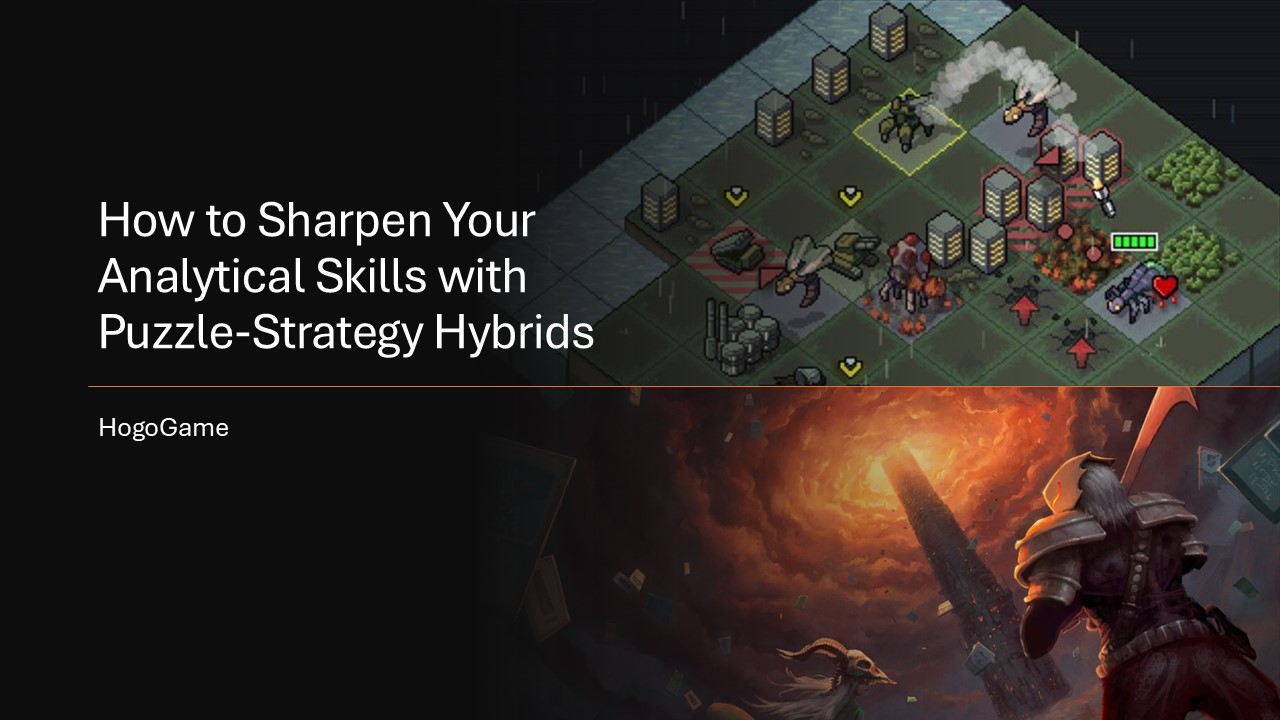An individual’s analytical skills can be significantly sharpened through engagement with puzzle-strategy hybrid games. These games create a unique environment where players must dissect complex problems, identify underlying patterns, and formulate multi-step plans to achieve victory. Unlike pure puzzle games that often have a single solution or pure strategy games that can sometimes rely on established meta-game tactics, the hybrid nature of these titles forces a constant interplay between calculated, logical deduction and long-term, adaptive planning. This dynamic process mirrors the challenges of real-world analytical thinking, making these games a potent tool for cognitive enhancement. By consistently engaging with the mechanics of these games, players are not just being entertained; they are actively training their minds to become more adept at critical thinking, problem-solving, and strategic foresight.
Solving Big Problems by Breaking Them Down
One of the most fundamental analytical skills honed by puzzle-strategy hybrids is the ability to deconstruct a seemingly insurmountable problem into smaller, more manageable components. When faced with a complex board state in a game like Into the Breach, a player is simultaneously confronted with multiple threats, each with its own set of rules and potential outcomes. A novice player might feel overwhelmed, leading to suboptimal moves that address the most immediate or obvious threat while ignoring more significant, long-term dangers.
The seasoned analyst, however, has trained their mind to perform a mental triage. They don’t see one large problem; they see a series of interconnected mini-puzzles. The first step in this process is threat assessment. This involves systematically identifying each individual threat and evaluating its potential impact. For instance, in Into the Breach, one Vek might be poised to destroy a power grid building, resulting in an immediate loss condition, while another is positioned to damage a secondary objective, and a third is simply moving into a more advantageous position. The analytical player learns to categorize these threats based on their severity and the urgency with which they need to be addressed.
Once the threats have been identified and categorized, the next step is resource allocation. In this context, “resources” are the player’s available actions and units. Each unit has a specific set of abilities, movement ranges, and potential impacts on the environment. The player must now analyze how to best utilize these resources to neutralize the identified threats. This is where the puzzle element comes to the forefront. Can a single unit’s ability be used to push one enemy into the attack path of another, thereby solving two problems with one action? Can a unit be positioned to block an enemy’s advance while simultaneously setting up a powerful combo for the following turn?
This process of deconstruction and resource allocation is not a one-time calculation. It’s an iterative loop that must be performed at the beginning of every turn. With each new turn, the board state changes, new threats emerge, and the player’s available resources may have shifted. This constant need to re-evaluate and re-prioritize strengthens the mental muscles responsible for breaking down complex information, a skill that is directly transferable to professional settings. A project manager deconstructing a large project into individual tasks and assigning them to team members based on their skills is engaging in the same fundamental thought process as a gamer planning their turn in a puzzle-strategy hybrid.
Example: A Typical Into the Breach Scenario

Imagine a scenario where three Vek are on the board. The first, a Leaper, is about to attack a building that is part of the power grid. The second, a Hornet, is targeting a friendly Mech. The third, a Scarab, is positioned to spawn a new, weaker Vek on the next turn. The player has three Mechs at their disposal: a Prime Mech that can punch an adjacent tile, a Ranged Mech that can fire a projectile in a straight line, and a Science Mech that can pull a unit towards it.
The analytical approach would be as follows:
Threat Assessment:
- High Priority: The Leaper attacking the power grid building. This could lead to a direct loss.
- Medium Priority: The Hornet attacking the friendly Mech. This would result in a loss of a valuable asset.
- Low Priority: The Scarab spawning a new Vek. While not ideal, it doesn’t pose an immediate, critical threat.
Resource Analysis and Solution Formulation:
- The Prime Mech is adjacent to the Leaper. It can punch the Leaper, killing it and neutralizing the primary threat.
- The Ranged Mech has a clear line of sight to the Hornet. It can fire its weapon to destroy the Hornet, protecting the friendly Mech.
- The Science Mech is out of range to directly affect the Scarab this turn. However, by eliminating the other two threats, the player can focus all their resources on the Scarab in the subsequent turn.
In this simplified example, the solution is straightforward. However, in more complex scenarios, the player might need to consider multi-step solutions, such as using the Science Mech to pull the Leaper into the attack path of the Hornet, causing them to damage each other, while the Prime Mech deals with the Scarab. This deeper level of analysis, involving the creative combination of available resources to solve multiple problems simultaneously, is the hallmark of a well-honed analytical mind.
How Spotting Patterns Can Make You a Smarter Player
Humans are natural pattern-recognition machines, but this ability can be significantly sharpened and refined through the deliberate practice offered by puzzle-strategy games. These games are built upon a foundation of underlying rules and systems that, while often complex, are ultimately consistent. The analytical player learns to look beyond the surface-level presentation of the game and identify the recurring patterns and hidden mechanics that govern success and failure.
This process begins with observational learning. In a game like Slay the Spire, a player will encounter hundreds of different cards, enemies, and relics. Initially, each encounter may feel unique and unpredictable. However, over time, the analytical player starts to notice patterns. They learn that certain enemies tend to use specific attack patterns in a predictable sequence. They discover that certain card combinations create powerful synergies that can trivialize otherwise difficult encounters. This isn’t just about memorization; it’s about understanding the logic behind the patterns.
Once a pattern is identified, the next step is hypothesis testing. The player formulates a hypothesis about how a particular mechanic works and then tests it through their gameplay. For example, a player might hypothesize that a certain enemy in Darkest Dungeon is more susceptible to blight damage than direct damage. They would then build a party composition that emphasizes blight-inflicting skills and observe the results. If their hypothesis is correct, they have gained a valuable piece of strategic knowledge that can be applied in future encounters. If it’s incorrect, they have still learned something valuable about the game’s mechanics and can refine their understanding.
This cycle of observation, hypothesis testing, and refinement is the core of the scientific method, and puzzle-strategy games provide a safe and engaging environment in which to practice it. The ability to recognize subtle patterns and use them to predict future outcomes is an invaluable analytical skill in any field that involves data analysis, from finance and marketing to scientific research and software development.
Example: Uncovering Synergies in Slay the Spire

A player is playing as the Silent character in Slay the Spire. They are offered a choice of three cards after a battle. One of the cards is “Corpse Explosion,” which applies a debuff to an enemy that causes it to deal damage to all other enemies when it dies. Another card offered is “Bouncing Flask,” which applies poison to a random enemy multiple times.
A novice player might evaluate these cards in isolation. “Corpse Explosion” seems situationally useful, while “Bouncing Flask” provides some decent damage over time.
The analytical player, however, sees a potential pattern and a powerful synergy. They recognize that poison is a form of delayed damage that can be applied to multiple enemies. They then form a hypothesis: if they can apply a significant amount of poison to one enemy and then trigger “Corpse Explosion” on that enemy, the resulting damage from the explosion could be enough to wipe out the entire enemy group.
They would then actively seek out other cards that support this strategy, such as “Catalyst,” which doubles an enemy’s poison, and “Noxious Fumes,” which applies poison to all enemies at the start of each turn. By building a deck around this central pattern of poison and “Corpse Explosion,” they have transformed two individually decent cards into a game-winning combination. This demonstrates a sophisticated level of analytical thinking that goes beyond simple card evaluation and into the realm of strategic deck construction based on identified patterns and synergies.
Thinking Ahead: Why Planning Beats Reacting
While many games reward quick reflexes and immediate problem-solving, puzzle-strategy hybrids place a heavy emphasis on strategic foresight – the ability to think several steps ahead and anticipate the long-term consequences of your current actions. This is a higher-order analytical skill that requires a synthesis of pattern recognition, problem decomposition, and a deep understanding of the game’s core mechanics.
In a turn-based game like XCOM 2, every move has a ripple effect that can be felt several turns later. Moving a soldier to a seemingly safe piece of high cover might provide a good short-term advantage, but it could also expose them to a flanking maneuver from an enemy that is currently out of sight. The analytical player learns to constantly ask “what if?” They run through mental simulations of potential future scenarios based on their current decisions.
This process involves several key mental exercises:
- Scenario Planning: Before committing to a move, the analytical player will consider multiple possible outcomes. What is the best-case scenario? What is the worst-case scenario? What is the most likely scenario? By weighing these possibilities, they can make a more informed decision that maximizes their chances of success while minimizing their exposure to risk.
- Resource Management Over Time: Strategic foresight is not just about anticipating enemy moves; it’s also about managing your own resources over the long term. In a game with a persistent world or campaign, such as Civilization VI, the decisions you make in the early game can have a profound impact on your late-game capabilities. The analytical player understands that investing in scientific research now might not provide an immediate military advantage, but it will unlock powerful technologies later in the game that can secure victory. This requires a willingness to delay gratification and make short-term sacrifices for long-term gains.
- Adaptive Strategy: No plan survives contact with the enemy. A key component of strategic foresight is the ability to adapt your long-term plan in response to new information and unexpected events. The analytical player doesn’t create a rigid, inflexible strategy. Instead, they develop a flexible framework that can be adjusted as the situation evolves. If an unexpected opportunity arises, they are prepared to deviate from their original plan to capitalize on it. If a sudden setback occurs, they are able to quickly reassess the situation and formulate a new plan of action.
This ability to think ahead, manage resources over time, and adapt to changing circumstances is the essence of strategic thinking, and it is a skill that is highly valued in leadership positions in any industry. The practice of long-term planning in the controlled environment of a puzzle-strategy game can provide a powerful training ground for developing this crucial analytical capability.
Example: The Opening Moves in Civilization VI

In the early stages of a game of Civilization VI, a player has to make several critical decisions that will shape the entire trajectory of their civilization. They need to decide where to settle their first city, what technologies to research, what civic policies to adopt, and what units to produce.
A player focused on short-term gains might immediately start producing military units to try and conquer a nearby city-state. This might provide a quick boost to their empire, but it could leave them technologically and culturally behind in the long run.
The analytical player with strategic foresight will take a more measured approach:
- Settlement Location: They will carefully analyze the surrounding terrain, looking for a location that offers a good balance of food, production, and access to luxury resources. They will also consider the defensive implications of the location and its proximity to other civilizations.
- Technological Path: They will look at the technology tree and identify a long-term goal, such as reaching a key military technology or a powerful wonder of the world. They will then chart a research path that efficiently leads to that goal, even if it means forgoing some less important technologies in the short term.
- Civic Policies: They will choose civic policies that align with their long-term strategy. If they are planning a cultural victory, they will prioritize policies that boost culture and tourism. If they are aiming for a scientific victory, they will focus on policies that enhance research and production.
Early Production: Instead of rushing military units, they might choose to produce a scout to explore the surrounding area and gather information, a builder to improve the tiles around their city, or a monument to increase their early culture generation.
By making these carefully considered decisions in the early game, the analytical player is laying the foundation for a successful and powerful civilization in the later stages of the game. They are demonstrating a sophisticated understanding of cause and effect over long periods and are actively shaping their own future through deliberate and strategic planning.
Forging a Sharper Mind Through Play
The worlds of puzzle-strategy hybrid games are more than mere digital distractions; they are sophisticated training grounds for the analytical mind. By engaging with these games, players are not simply passing the time; they are actively participating in a form of cognitive exercise that sharpens their abilities to deconstruct complex problems, recognize subtle patterns, and cultivate long-term strategic foresight. The iterative loop of threat assessment and resource allocation in games like Into the Breach mirrors the decision-making processes required in high-stakes professional environments. The cycle of observation, hypothesis testing, and refinement in titles like Slay the Spire is a practical application of the scientific method, fostering a mindset of continuous learning and adaptation. And the long-term planning and resource management demanded by games like Civilization VI and XCOM 2 provide invaluable practice in strategic thinking and future-oriented decision-making.
The skills honed in these virtual worlds are not confined to the screen. They are transferable, real-world analytical capabilities that can empower individuals to navigate the complexities of their personal and professional lives with greater clarity, confidence, and strategic acumen. The next time you find yourself deep in thought, plotting your next move in a challenging puzzle-strategy hybrid, recognize that you are not just playing a game; you are forging a sharper, more analytical mind.


